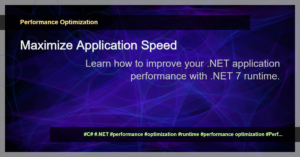Demystifying the V8 JavaScript Engine
Are you curious about how JavaScript code gets executed in your browser? Have you ever wondered what happens behind the scenes when you run a JavaScript program? If so, you’re in the right place! In this article, we’ll be delving into the fascinating world of the V8 JavaScript engine and unraveling its inner workings.
What is the V8 JavaScript Engine?
The V8 JavaScript engine is an open-source, high-performance engine developed by Google. It is the engine that powers the JavaScript execution in the Chrome browser and is also used by other projects such as Node.js. V8 is designed to compile and execute JavaScript code efficiently, optimizing for speed and memory usage.
Key Components of the V8 JavaScript Engine
1. Parser
Before any code can be executed, it needs to be parsed. The parser’s job is to analyze the JavaScript source code and create an Abstract Syntax Tree (AST) representation of the code. This AST is then used by the engine to generate bytecode or machine code, depending on the execution context.
2. Ignition and TurboFan
Once the AST is generated, V8 uses a two-tiered approach to execute the code. The Ignition interpreter quickly executes the bytecode, allowing for faster startup time. As the code continues to run, TurboFan, V8’s optimizing compiler, kicks in and generates highly-optimized machine code, improving the performance further.
3. Memory Management and Garbage Collection
Efficient memory management is crucial for any runtime environment. V8 implements a generational garbage collector that divides the heap into several spaces, each optimized for different types of objects. It also employs techniques like object aging and scavenging to minimize the impact of garbage collection on application performance.
4. Event Loop
JavaScript is single-threaded, which means it can only do one thing at a time. However, with the help of the event loop, it can handle asynchronous operations efficiently. The event loop manages the execution of callback functions, ensuring they are executed when their associated events occur.
5. Just-In-Time (JIT) Compilation
V8 uses a Just-In-Time (JIT) compilation technique to dynamically translate JavaScript bytecode into machine code at runtime. This allows V8 to optimize code execution based on real-time information and deliver impressive performance gains.
Performance Optimization Techniques in V8
V8 employs several optimization techniques to improve the performance of JavaScript code:
- Inlining: V8 optimistically inlines small functions to reduce the overhead of function calls.
- Inline Caching: By caching the lookup results of property accesses, V8 avoids redundant property lookups.
- Hidden Classes: V8 uses hidden classes to optimize object property accesses and reduce the amount of memory needed.
- Optimized Call: V8 optimizes frequently used function calls to make them faster.
- Deoptimization: When the assumptions made by V8’s optimizer don’t hold anymore, it can deoptimize functions and fall back to the interpreter.
Conclusion
The V8 JavaScript engine plays a crucial role in executing JavaScript code efficiently and powering modern web applications. By understanding its key components and optimization techniques, you’ll be better equipped to write performant JavaScript code and make the most out of the capabilities provided by V8.
So next time you’re writing JavaScript code, take a moment to appreciate the powerhouse that sits beneath it—the V8 JavaScript engine.
Happy coding!
Note: This content can be published on both WordPress and Medium platforms.




